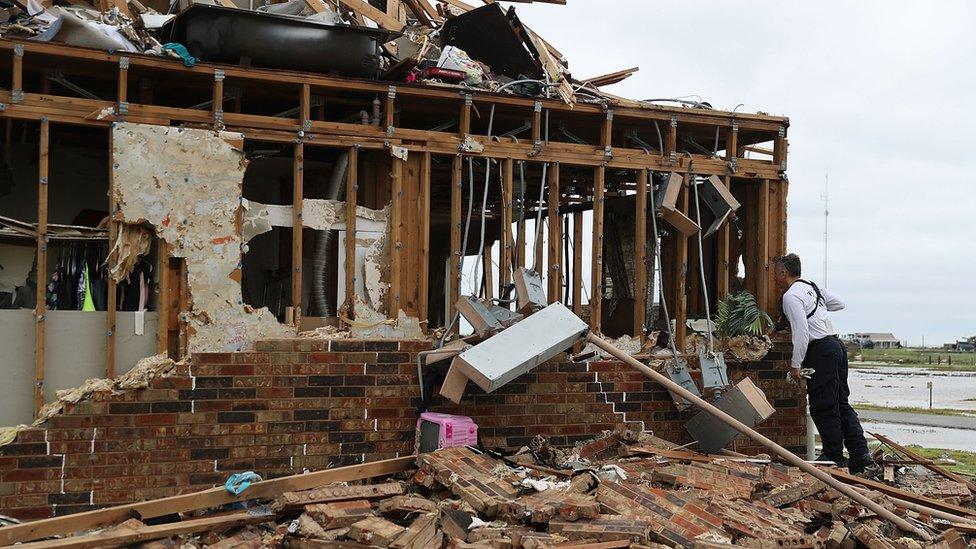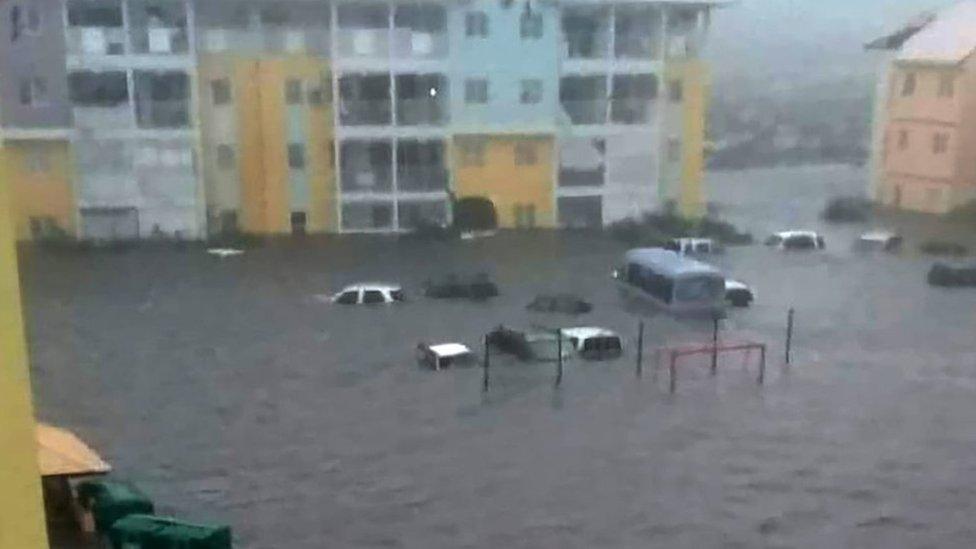Reality Check: Paying for a hurricane
- Published

Storms of unprecedented power have been sweeping the United States and the Caribbean, leaving major damage in their path.
Hurricane Irma, the most powerful Atlantic storm in a decade, comes in the wake of the catastrophic flooding that hit America's fourth-largest city last week.
Within hours of Hurricane Harvey hitting Houston, officials were counting the financial costs.
So how do people come up with these figures so soon after the disaster strikes?
We do know that the recovery effort will cost a lot of money - many expect it to be among the most expensive disasters in US history. Dan Patrick, the lieutenant governor of Texas, estimated the Hurricane Harvey recovery would cost as much as $200bn.
The rains brought by Harvey in Texas and Louisiana were extraordinary, with a record-breaking 50in (1,270mm) falling in parts of Houston.
While experts can look to previous events to project the cost of a disaster, the business of predicting how much the floods will cost homeowners and businesses is far from an exact science.
How are the costs worked out?
To estimate the cost of a disaster like Harvey or Irma, sophisticated economic models take into account data from past extreme weather events and incorporate thousands of different scale storms to predict the financial impact on a local area. These same models are used worldwide.
The pre-empted costs are useful to insurance companies and government officials, who need to decide how much money is required to fund the recovery effort.
Insurance company Swiss Re uses a catastrophe model to look at the path of a hurricane and variations in the local climate to predict the wind speed and storm surge. The expected strength and severity of the hurricane can then be used to anticipate the effect on a building and what this damage is likely to cost.
Its head of floods, Caspar Honegger, says: "These catastrophe models have been calibrated using historical losses from hurricanes, using the tracks and losses from the last decades."
The models then also factor in "hundreds of thousands of storms, which did not, but could potentially happen" in order to calculate insurance premiums, he says.

Local reports, social media, crowdsourced information and satellite observations are assessed alongside the models to work out expected loss after a flood.
Other factors such as the size of the local economy, value of infrastructure, levels of poverty and information on personal and commercial property can also help model damage and recovery costs.
The flooding in Texas has caused widespread damage to people's homes and local infrastructure and is expected to take a toll on the economy in years to come.
What might be included in the damages?
The housing stock in an area can be mapped out and the damage to homes valued in the immediate aftermath of the disaster. An analysis by Reuters found that property worth $23bn had been affected by Hurricane Harvey. Hundreds of thousands of cars have also reportedly been destroyed. The median house price in the area is $300,000 and around 200,000 homes have been damaged according to economic research company, Capital Economics. They also estimate that damage to cars will cost insurers $6bn.
Damage to infrastructure, including roads, bridges and lighting will also be considered, along with the impact on agriculture.
The main flood insurer in the area, the National Flood Insurance Program, comes from a federal government scheme - citizens who live in high-risk areas are legally required to take out insurance.
In addition to this physical damage, the local economy, workforce and tourism are likely to suffer in ways that may be harder to quantify.
Caribbean islands hit by major storms will not have the same resources or financial reserves as the US, so recovery might be a longer and more difficult process.
Costliest hurricanes in the US
The US has regularly paid out large sums to cover the cost of natural disasters.
The costliest hurricane in US history was Katrina in 2005, estimated at $156bn.
The US has experienced 212 natural disasters since 1980 with the overall costs totalling $1.2tn, according to the National Oceanic and Atmospheric Association, external (NOAA).
And as of July there had already been nine weather disasters in the US this year with losses exceeding $1bn.



- Published6 September 2017
